
Flyback Converter Circuit Diagram

If you desire the personal touch then skins
If you desire the personal touch then skins, charms and faceplates will allow you to express your style. They turn the subdued or plain phone into a work of art.
Belt Clips and Vibrating Belt Clips - keeps your phone conveniently in place and lessens the chance of dropping or misplacing your investment.
The mobile communication products, the goal is to identify and introduce innovative products, very attractive and substantial benefits. For example, cell phone interceptor allows to control the traffic in one direction to provide much-needed peace of mind. Simply put, it filtered out the clutter. When the phone is located in mobile interceptor place, it sends a signal to the mobile phone operating at the same frequency, interference success.
Mobile phone interceptor can also be used as a means of combating terrorism. Within the communication range of business areas, from preventive measures to curb organized crime and assassin for remote activation of explosives.The problem has to eat sugar metabolism, it does not just burn.
DC 12V Car Battery Charger
Circuit Diagram:
 |
| DC 12V - Car Battery Charger Circuit Diagram |
The typical car battery chargers have simple designs that produce a few amperes during its operation while charging the battery continuously. In the event that the charger is not turned OFF, overcharging will occur with due to evaporation which looses electrolyte and might cause damage to its elements. With the design of this circuit, this type of problem can be avoided by monitoring the condition of charging of the battery via the retroactive control circuit.
This is done by imposing a high current charge until the charging is complete. The LED LD2 will indicate that charging is full which will eventually deactivate the charging circuit. In creating this design, the cables that connect the transformer to the circuit should have enough cross-sectional area to prevent voltage drop when heat is produced as the current flows through. The adjustment of the circuit comes after the design, with the adjustment of TR1 to null value.
The LEDs are checked without connecting the battery initially and allowing them to turn ON. By connecting a battery, a 2A to 4A current is permitted to flow while ensuring that LD2 is turned OFF. TR1 is carefully adjusted to a few hundred milliamps until LD2 turns ON. This is done using the hydrometer technique. The correct adjustment allows LD2 to begin flickering as the battery is being charged. Connected to the battery is Q1, since it functions as a rectifier and charges the battery, which can be fired in each half cycle by R3-4 and LD2.
In case an uncharged battery is connected, a low terminal voltage is obtained. When the voltage of the battery exceeds the predetermined value, Q2 is activated by the combination of C1, TR1, R2, and D2. Q1 is deactivated with the current supply cut off as the battery terminal voltage is increased where Q2 shifts the control of Q1 gate after TR1 fixed the increased battery terminal voltage above the level. A heat sink should be mounted on the bridge rectifier GR1 and Q1 to prevent overheating. A 5A DC ammeter M1, connected in parallel, is used to measure the charge current.
The circuit’s theory of design will only be applied to batteries with rating of 12V. These batteries are mainly used in a variety of vehicles used in land, air, and water such as personal watercraft like boat, yacht, Jet Skis, and other marine applications. They are also utilized widely in automobiles and motorcycles such as quad bike, RVs, snowmobile, motor scooter, utility vehicle, and riding mower. It can also be beneficial to disabled persons by providing aid to wheelchairs and mobility scooters.
Parts:
R1= 1Kohms
R2= 1.2Kohms
R3= 470 ohms
R4= 470 ohms
R5= 10Kohms
C1= 10uF 25V
D1= 1N4001
D2= 6.8V 0.5W zener
TR1= 4.7Kohms trimmer
Q1= BTY79 or similar 6A SCR
Q2= C106D SCR
GR1= 50V 6A Bridge Rectifier
T1= 220V/17V 4A Transformer
LD1= Green LED
LD2= Red LED
M1= 0-5A DC Ampere meter
S1= 10A D/P On Off Switch
F= 5A Fuse
Four Tone Siren

UM3561 IC includes oscillator and selector circuits so few external component is used for construction of four tone siren.
The UM3561 contains programmed mask ROM to simulate siren sound. Power consumption of IC is low.It is powered by 3 Volt. One NPN Transistor is used for amplification of audio signal.

Circuit Diagram of Four Tone Siren
Part List :
IC UM3561
Resistance = 220 Ohms
Condenser 100Mfd
Transistor BC548
Battery Container 3V
Switches
Outdoor Lighting Controller
Outdoor Lighting Controller Circuit Diagram :

Source : http://www.ecircuitslab.com/2012/09/outdoor-lighting-controller.html
123 Game All MCU Free
 |
| 123 Game Circuit Diagram - All MCU-Free |
The number of steps it wants to move is shown by three LEDs (one, two or three LEDs light up) at the top of the playing area. Naturally, the human player must move the ‘game token’ for the machine opponent. The winner is the first one to reach the goal exactly. How can such simple circuitry represent such a formidable opponent? As already mentioned, the path from the start to the goal is formed by 30 sockets. Each socket has an associated ideal next move.
There are three possibilities, of course: 1, 2 or 3. As you can see from the schematic diagram, switch S1 closes the circuit (which means the player asks the ‘computer’ how many steps it wishes to move) if the probe is touching one of the sockets. All 30 sockets are classified into three types, represented in the schematic diagram by one socket for each type. All sockets belonging to a particular type are simply connected together electrically, which is not shown on the schematic diagram for the sake of clarity.
This is how the LED display works:
The player touches the right-hand contact with R4 (only LED D3 lights up), the left-hand contact with R3 (LEDs D1 and D2 light up), or the middle contact with diodes D4 and D5 (all three LEDs light up). The two diodes prevent all three LEDs from lighting up if the player touches the left-hand or right-hand contact. The key to all this lies in the assignment of the 30 sockets to the three types of logic, which means the three types of ideal next move.
Working backward from the goal, no further move is possible when the goal is reached. For this reason, the last socket is not connected to anything. At the socket just before the goal, the ‘computer’ naturally wants to be exactly one step in front. Consequently, this socket is connected to R4. At the second socket before the goal, the electronics wants to move by two steps. This socket is thus connected to R3.
Obviously, three moves before the finish, a three-step is best as it leads to instant victory. Consequently this socket is connected to D4/D5. The correct response of the ‘computer’ is shown in Figure 2 by the number next to each position. As the two opponents take turns playing, the electronics always tries to arrive at a strategically favourable position (marked by the arrows). If the electronics manages to reach one of these positions, it’s impossible for the human player to win. This means that the human player can only win by starting first and always making the right move.
High Current Battery Discharger
With 12V selected, the prototype unit stops the discharge at 11.4V which corresponds to a cell voltage of 1.9V (this is a pretty good indication of a discharged 12V battery). The loads consist of three automotive lamps, selected to provide discharge rates to suit the battery being tested. These lamps should be fitted to sockets, so that they can be easily swapped for other lamps with different wattages, if required. That way, the discharge current can be varied simply by changing the lamp wattage. By the way, this circuit will also work with 6V batteries, provided the relay holds in. This gives an "end-point" voltage of about 5.7-5.8V.
Digital Isolation up to 100 Mbits
The company produce many other configurations including bidirectional versions that would be suitable for RS485 interfacing. The IsoLoop coupler is based on relatively new GMR (GiantMagnetoResistive) technology. The input signal produces a current in a planar coil. This current generates a magnetic field that produces a change in resistance of the GMR material. This material is isolated from the planar coil by a thin film high voltage insulating layer. The change in resistance is amplified and fed to a comparator to produce a digital output signal. Differences in the ground potential of either the input or output stage will not produce any current flow in the planar coil and therefore no magnetic field changes to affect the GMR material. Altogether the circuit provides a good electrical isolation between input and output and also protects against input signal transients (EMV).
Solar Relay
In the absence of an external load, the battery voltage recovers quickly, the terminal voltage rises above 14.4 V again and the switching process starts once again, despite the built-in hysteresis. A solution to this problem is provided by the circuit shown here, which switches on the fan in response to the sweltering heat produced by the solar irradiation instead of an excessively high voltage at the battery terminals. Based on experience, the risk of battery overheating is only present in the summer between 2 and 6 pm. The intensity of the sunlight falling within the viewing angle of a suitably configured ‘sun probe’ is especially high precisely during this interval.
This is the operating principle of the solar relay. The trick to this apparently rather simple circuit consists of using a suitable combination of components. Instead of a power FET, it employs a special 12-V relay that can handle a large load in spite of its small size. This relay must have a coil resistance of at least 600 Ω, rather than the usual value of 100-200 Ω. This requirement can be met by several Schrack Components relays (available from, among others, Conrad Electronics). Here we have used the least expensive model, a type RYII 8-A printed circuit board relay. The light probe is connected in series with the relay. It consists of two BPW40 photo-transistors wired in parallel.
Depending on the intended use, the 220-Ω resistance of the thermistor can be modified by connecting a 100-Ω resistor in series or a 470-Ω resistor in parallel. If the photo-transistors are fastened with the axes of their incident-angle cones in parallel, the 40-degree incident angle corresponds to 2 pm with suitable solar orientation. If they are bent at a slight angle to each other, their incident angles overlap to cover a wider angle, such as 70 degrees. With the tested prototype circuit, the axes were oriented nearly parallel, and this fully met our demands. The automatic switch-off occurs quite abruptly, just like the switch-on, with no contact jitter.
This behavior is also promoted by the NTC thermistor, since its temperature coefficient is opposite to that of the ‘PTC’ relay coil and approximately five times as large. This yields exactly the desired effect for energizing and de-energizing the relay: a large relay current for engagement and a small relay current for disengagement. Building the circuit is actually straightforward, but you must pay attention to one thing. The photo-transistors resemble colorless LEDs, so there is a tendency to think that their ‘pinning’ is the same as that of LEDs, with the long lead being positive and the short lead negative. However, with the BPW40 the situation is exactly the opposite; the short lead is the collector lead. Naturally, the back-emf diode for the relay must also be connected with the right polarity. The residual current on cloudy days and at night is negligibly small.
Solar Battery Protector Prevents excessive Discharge
Circuit diagram:

IC1a monitors the battery voltage via a voltage divider connected to its non-inverting input. Its inverting input is connected to a reference voltage provided by ZD1. Trimpot VR1 is set so that when the battery is charged, the output at pin 1 is high and so Mosfet Q1 turns on to operate the lights. The two comparator outputs are connected together in OR gate fashion, which is permissible because they are open-collector outputs. Therefore, if either comparator output is low (ie, the internal output transistor is on) then the Mosfet (Q1) is prevented from turning on. In practice, VR1 would be set to turn off the Mosfet if the battery voltage falls below 12V. The suggested LDR is a NORP12, a weather resistant type available from Farnell Electronic Components Pty Ltd.
Lead Acid Battery Regulator For Solar Panel Systems
It is, of course, also possible to arrange for a second battery to be charged by the super-fluous energy. In this case, however, care must be taken to ensure that when the second battery is also fully charged , there is also a control to divert the superfluous energy. The shunt resistance needed to dissipate the superfluous energy must be capable of absorbing the total power of the panel, that is, in case of a 100W panel, its rating must be also 100 W. This means a current of some 6–8 A when the operating voltage is 12 V. When the voltage drops below the maximum charging voltage of 14.4V growing to reduced sunshine, the shunt resistance is disconnected by an n-channel power field effect transistor (FET), T1.
When the battery reaches the voltage at which it will be switched off, that is, 13.8 – 14.4V, adjust P1 slowly until the output of comparator I C2 changes from low to high, which causes the load across T1 to be switched in. Potentiometer P1 is best a 10-turn model. When the control is switched on for the first time, it takes about 2 seconds for the electrolytic capacitors to be charged. During this time, the output of the comparator is high, so that the load across T1 is briefly switched in. In case T1 has to switch in low-resistance loads, the BUZ11 may be replaced by an IRF44, which can handle twice as much power (150 W) and has an on-resistance of only 24 mR. Because of the very high currents if the battery were short-circuited, it is advisable to insert a suitable fuse in the line to the regulator. The circuit draws a current of only 2 mA in the quiescent state and not more than 10mA when T1 is on.
1969 Pontiac Firebird Electrical Wiring DIagram
 |
| 1969 Pontiac Firebird Electrical Wiring DIagram |
AVR Dongle Circuit

Condenser Mic Audio Amplifier Circuit Diagram
The compact, low-cost condenser mic audio amplifier described here provides good-quality audio of 0.5 watts at 4.5 volts. It can be used as part of intercoms, walkie-talkies, low-power transmitters, and packet radio receivers. Transistors T1 and T2 form the mic preamplifier. Resistor R1 provides the necessary bias for the condenser mic while preset VR1 functions as gain control for varying its gain. In order to increase the audio power, the low-level audio output from the preamplifier stage is coupled via coupling capacitor C7 to the audio power amplifier built around BEL1895 IC.BEL1895 is a monolithic audio power amplifier IC designed specifically for sensitive AM radio applications that delivers 1 watt into 4 ohms at 6V power supply voltage. It exhibits low distortion and noise and operates over 3V-9V supply voltage, which makes it ideal for battery operation. A turn-on pop reduction circuit prevents thud when the power supply is switched on. Coupling capacitor C7 determines low-frequency response of the amplifier. Capacitor C9 acts as the ripple-rejection filter.
Circuit Diagram :
Condenser Mic Audio Amplifier Circuit Diagram
Capacitor C13 couples the output available at pin 1 to the loudspeaker. R15-C13 combination acts as the damping circuit for output oscillations. Capacitor C12 provides the boot strapping function. This circuit is suitable for low-power HAM radio transmitters to supply the necessary audio power for modulation. With simple modifications it can also be used in intercom circuits.
Author: D. Prabakaran - Copyright: Electronics For You Mag
20W CLASS A POWER AMPLIFIER ELECTRONIC DIAGRAM
The 0.25 Ohm resistor should cause little grief (4 x 1 Ohm 1W resistors in parallel), but some experimentation may be needed here, since the base-emitter voltage of the BC549 determines the current. This circuit works by using the BC549 to steal any excess base current from the compound pair. As soon as the voltage across the 0.25 Ohm resistor exceeds 0.65V, the transistor turns on and achieves balance virtually instantly.
The 1k trimpot in the collector of the first LTP transistor allows the DC offset to be adjusted. The nominal value is around 400 ohms, but making it variable allows you to set the output DC offset to within a few mV of zero.
Very Low Power 32kHz Oscillator
Operating at 3 V and 32 kHz, IC1 draws just 7 µA. The comparator output can source and sink 40mA and 5mA respectively, which is ample for most low-power loads. However, the moderate rise/fall times of 500 ns and 100 ns respectively can cause standard, high-speed CMOS logic to draw higher than usual switching currents. The optional 74HC14 Schmitt trigger shown at the circuit output can handle the comparator’s rise/fall times with only a small penalty in supply current.
1992 Audi 80 Wiring Diagram
 |
| 1992 Audi 80 Wiring Diagram |
FPF270X Over Current Protection

All devices clamp the load current so that it cannot exceed an externally programmed current level. An over temperature feature provides further device protection in case of excessive levels of power dissipation.
FPF2700 responds to an overload condition that lasts longer than a fixed blanking period by turning off the load, followed by a retry after the auto-restart time.The FPF270X has an adjustable 0.4A to 2.0A minimum current limit set through an external resistor, RSET, connected between ISET and GND.A 4.7 F to 100 F ceramic capacitor is adequate for CIN in most cases. Larger CIN values may be required in high-voltage or high-current applications.

A 0.1 F to 1 F capacitor, COUT, should be placed between the OUT and GND pins. This capacitor helps prevent parasitic board inductances from forcing the output voltage below ground when the switch turns off.
During a hard short condition on the output while operating at greater than 24V VIN, a large instantaneous inrush current is delivered to the shorted output. A capacitor must be placed at the OUTPUT pin, acting as a current source to support the instantaneous current draw (Table 2).

For more details about how to design a protection circuit using FPF270X IC please consult the manufacturer datasheet.
Safety Guard Circuit
Parts:
- R1 = 1M
- R2 = 470R
- R3 = 820R
- R4 = 56K
- R5 = 470R
- R6 = 1K
- R7 = 10K
- C1 = 1kuF-25V
- C2 = 100nF-63V
- C3 = 0.02uF-63V
- C4 = 10uF-25V
- C5 = 10uF-25V
- D1 = 1N4007
- D2 = 1N4007
- D3 = 1N4007
- D4 = 1N4148
- D5 = Red LEDs
- D6 = Red LEDs
- RL1 = 12V Relay
- IC1 = AN7809
- IC2 = CD4060
- SW1 = Switch
- T1 = 24V-AC Centre Tapped Transformer
Wiring Diagram

Pin S Type Caravan Wiring Uk Trailer Parts.
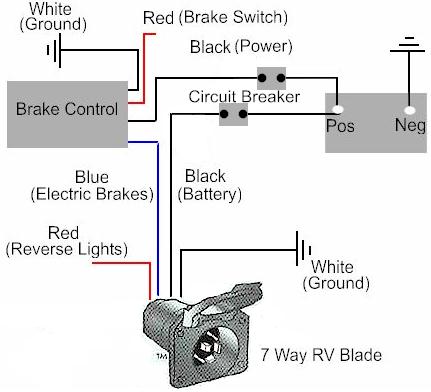
Electric Trailer Brake Controller Wiring.

2004 Gmc 2500hd Trailer Wiring Diagram Circuit Schematic.

12s Wiring Diagram.

Trailer Wiring Diagram Light Plug Brakes Hitch 4 Pin Way Wire Brake.

Way 7 Pole Rv Travel Trailer Connector Wiring Color Code.
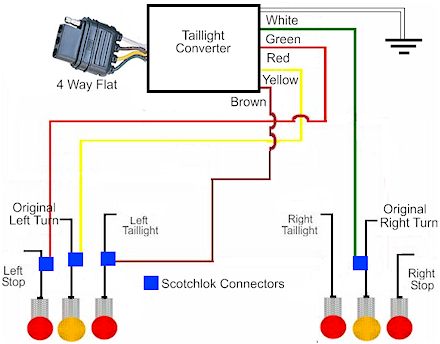
How To Install A Trailer Light Taillight Converter In Your Towing.
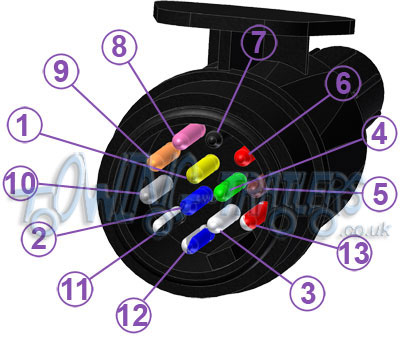
Wiring For 13 Pin Euro Plugs Sockets For Trailers Caravans Uk.

Trailer Wiring Diagrams Etrailer Com.

Trailer Wiring Basics For Towing.
Build a Universal Active Filter Circuit Diagram
Build a Universal Active Filter Circuit Diagram

1W BTL Audio Amplifier circuit and explanation
Circuit diagram:
Using a 5-V supply and an 8-W loudspeaker, an output power of 1 watt can be delivered. The volume control has an attenuation range of between 0 dB and 80 dB in 64 steps set by the 3-state level at the UP/DOWN pin: floating: volume remains unchanged; negative pulses: decrease volume; positive pulses: increase volume Each pulse at he Up/DOWN pin causes a change in gain of 80/64 = 1.25 dB (typical value). When the supply voltage is first connected, the attenuator is set to 40 dB (low volume), so the gain of the total amplifier is then –20 dB. Some positive pulses have to be applied to the UP/DOWN pin to achieve listening volume. The graph shows the THD as a function of output power. The maximum quiescent current consumption of the amplifier is specified at 10 mA, to which should be added the current resulting from the output offset voltage divided by the load impedance.
Flugzeugepiper 32rt Lance
Flugzeuge De Piper Pa 32rt 300 Lance Ii.
Flugzeuge De Piper Pa 46 350p Malibu Mirage.
Flugzeuge De Pa 28 181 Archer Ii.

Origin United States Of America Manufacturer Piper Aircraft First.

Flugzeuge De Piper Pa 42 720 Cheyenne Iiia.

Piper Pa 28 181 Flugzeug Zu Verkaufen Ad Idno 100580 Aircraft24.

Civil Fabricante Piper Aircraft Introducido 1960 Estado En Servicio N.

G Lker Traum Vom Fliegen Beautyshots Piper L 4 Grasshopper.
Flugzeuge De Piper Pa 28 161 Cadet Ph Vfc.

Flugzeuge De Piper P28 T Flughafen Tonder D Nemark.
TDA7360 stereo circuit schematic

TDA7360 stereo circuit schematic
Above circuit diagram shows this TDA7360 stereo test and application circuit schematic.
Value recommendation of each external components of this circuit can be
described as follows: 1. C1 for input decoupling (CH1) is 0.22 uF
2. C2 for input decoupling (CH2)3is 0.22 uF
3. C3 for supply voltage rejection filtering capacitor.
4. C4 for 22uF standby ON/OFF delay
5. C5 minimal 220uF for standby-pass
6. 100 nF for C6 with its ability to supply by-pass
7. 2200 uF for the C7 of Output decoupling CH2
Trailer Wiring Electrical Connections Boat

Trailer Light Wiring Typical Trailer Light Wiring Diagram.

Trailer Wiring Electrical Connections Are Used On Car Boat And.

Typical 7 Way Trailer Wiring Diagram Circuit Schematic.
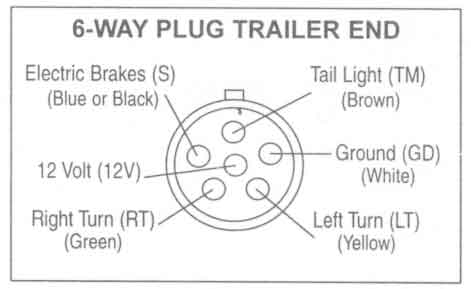
Trailer Wiring Diagrams Johnson Trailer Sales Colfax Wisconsin.

Way Trailer Wiring Diagram And Connectors Pinout Circuit Schematic.

Post It But I Ll Try To Diagram It Here.

Pj Trailers Plug Diagram.
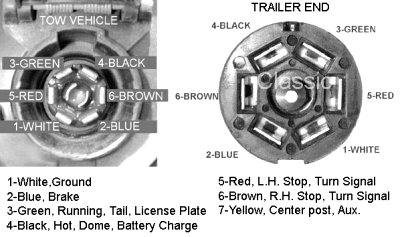
Troubleshooting Trailer Wiring.
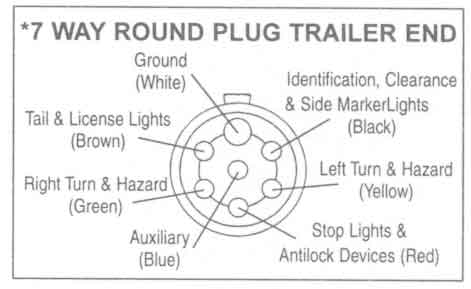
Trailer Wiring Diagrams Johnson Trailer Sales Colfax Wisconsin.

This Allows You To Connect Up The Wiring To Tow A Caravan Or Trailer.





